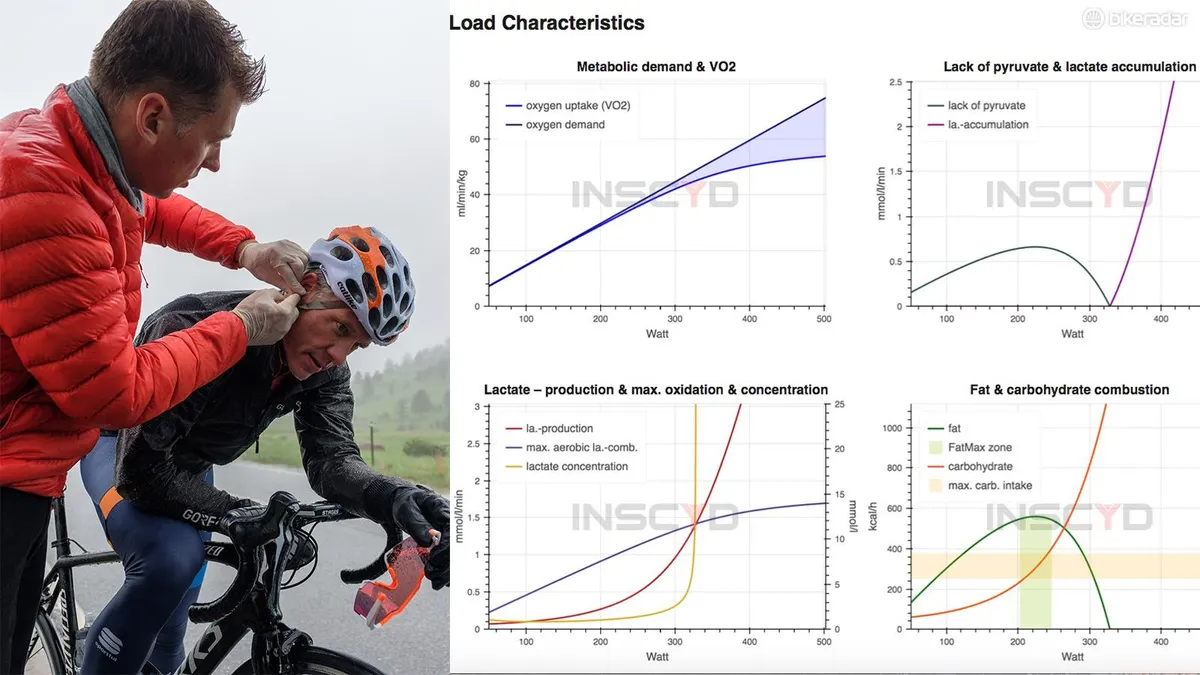If you are interested in training with power and find your current analysis software too plain, you may be interested in INSCYD, a testing and analysis package created by Sebastian Weber, former head of sport science at T-Mobile / Highroard / Columbia / HTC.
INSCYD — pronounced 'inside' — claims to measure what is going on inside the muscles, and quantifies a rider's strengths and weaknesses across various training zones. The system tells you things such as maximum fat and carbohydrate metabolism rates, or details on how two riders with the same threshold power can have very different power profiles above that shared threshold.
After being used by pro teams for a number of years, INSCYD became available to amateurs last year. Currently, though, you have to go through a coach or university that has licensed INSYCD; you can't purchase it directly as a rider.
The company views its product like the motion-capture fit Retül brand — a technology service coaches could use with riders, not a consumer product on its own.
Weber recently visited my hometown of Boulder, Colorado and gave me a demonstration of how the INSCYD testing and the analysis works.
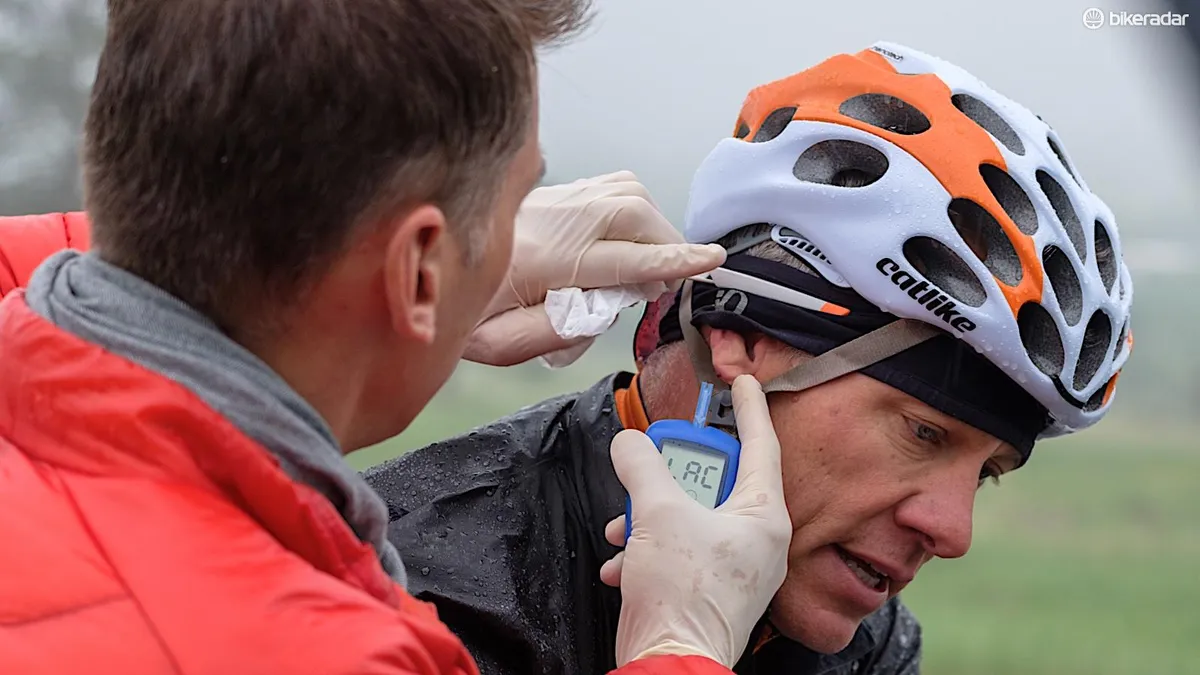
"Everybody talks about FTP [functional threshold power], and everyone wants to improve it," Weber said. "But if I walk up to any coach and ask about the mechanism that creates FTP and how you change it, most coaches can't answer. If we understand where power comes from, then we can understand how to improve it."
INSCYD breaks down where power comes from by measuring (or, sometimes, calculating) three things: power output, time and lactate accumulation.
What INSCYD quantifies for riders
- VO2 Max / aerobic capacity
- VLaMax / glycolytic capacity
- Anaerobic threshold (FTP)
- Economy / efficiency
- Composition of power output (aerobic vs glycolytic vs creatine phosphate)
- Fat and carbohydrate combustion
- Fatigue and recovery
How INSCYD measures with lactate
If you were hoping for a 20-minute all-out time trial test on a trainer, you won't find it here. INSCYD uses field testing across a range of intensities and time ranges. As the cycling program is all about power output, you must have a power meter. Testing is done ideally with lactate measurement, but can be done just with power.
For my testing, Weber had me do four efforts up a hill, measuring the lactate concentration in my bloodstream multiple times after each interval by pricking my ear and using little strips for on-site analysis.
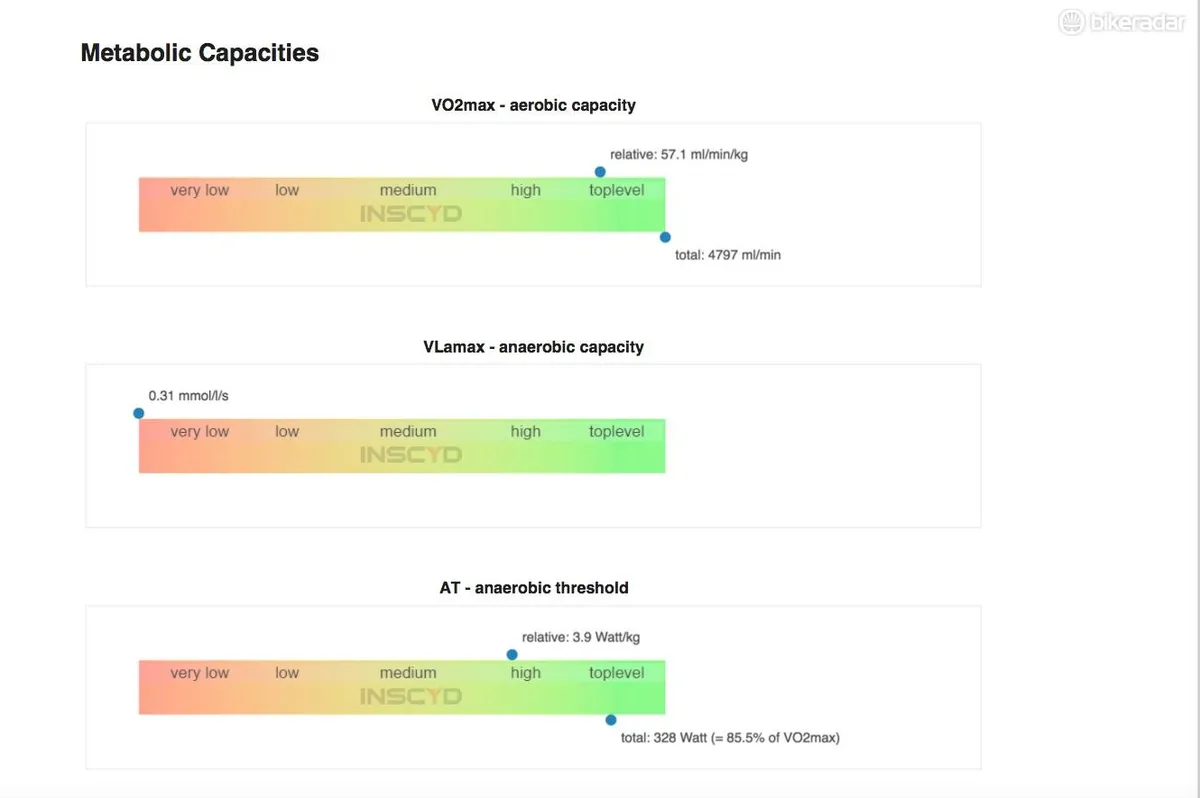
After a brief warm-up (and an ear-prick test), he asked me to do six minutes at my FTP, which I peg at 330w. With his car pulled to the side of the road partway up a climb, Weber would measure my lactate immediately after each effort, and record it along with my average power and duration. I used my Stages LR power meter and Dash head unit, marking each effort with the lap counter.
The next effort was six minutes at 376w average, then 3:30 at 371w. And finally he asked me to hold 420w for as long as I could, which was about four minutes.
The entire test, including warm-up and intermediate recoveries, was done seated to minimize the effects of upper-body muscles on the test.
The idea was to measure lactate concentration at the approximated AT threshold, then above it at different durations, and then well above it until failure. Weber will often test pro riders such as world TT champ Tony Martin during their normal training; he won't specify the interval durations, but will instead just use whatever their coach had prescribed for that day.
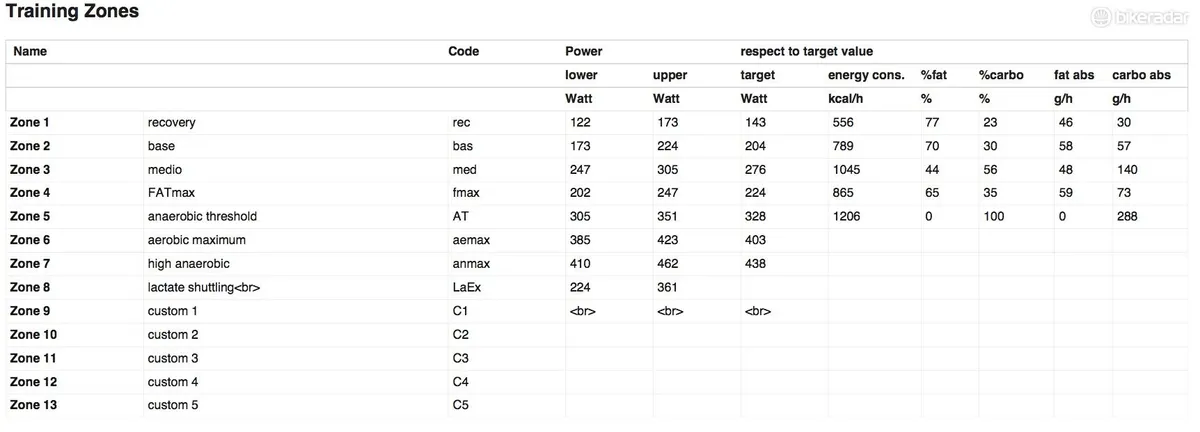
How INSCYD works without lactate measurement
When Weber or other INSCYD coaches can't test athletes in person, they use power-based testing without lactate measurement. In this scenario, they have a rider do three efforts: a 15-second all-out effort (seated) for VLaMax, a 4min max effort for VO2 Max, and a 20min test.
Weber even says that as long as he has just two of these measurements, he can calculate the third.
This method obviously leans more heavily on the model, which is based on decades of academic studies, than the lactate-based testing.
What INSCYD does and doesn't do
Test data is uploaded into INSCYD, which has a series of models for lactate accumulation and clearing. With actual measurements for time, power and lactate accumulation, the model calculates all manner of things, from VO2 max and AT threshold, to the percentage of aerobic and anaerobic contributions to each level of power output.
INSCYD spits out a variety of power-based charts: oxygen uptake vs demand, lactate production and combustion, fat and carbohydrate combustion, lactate accumulation and more.
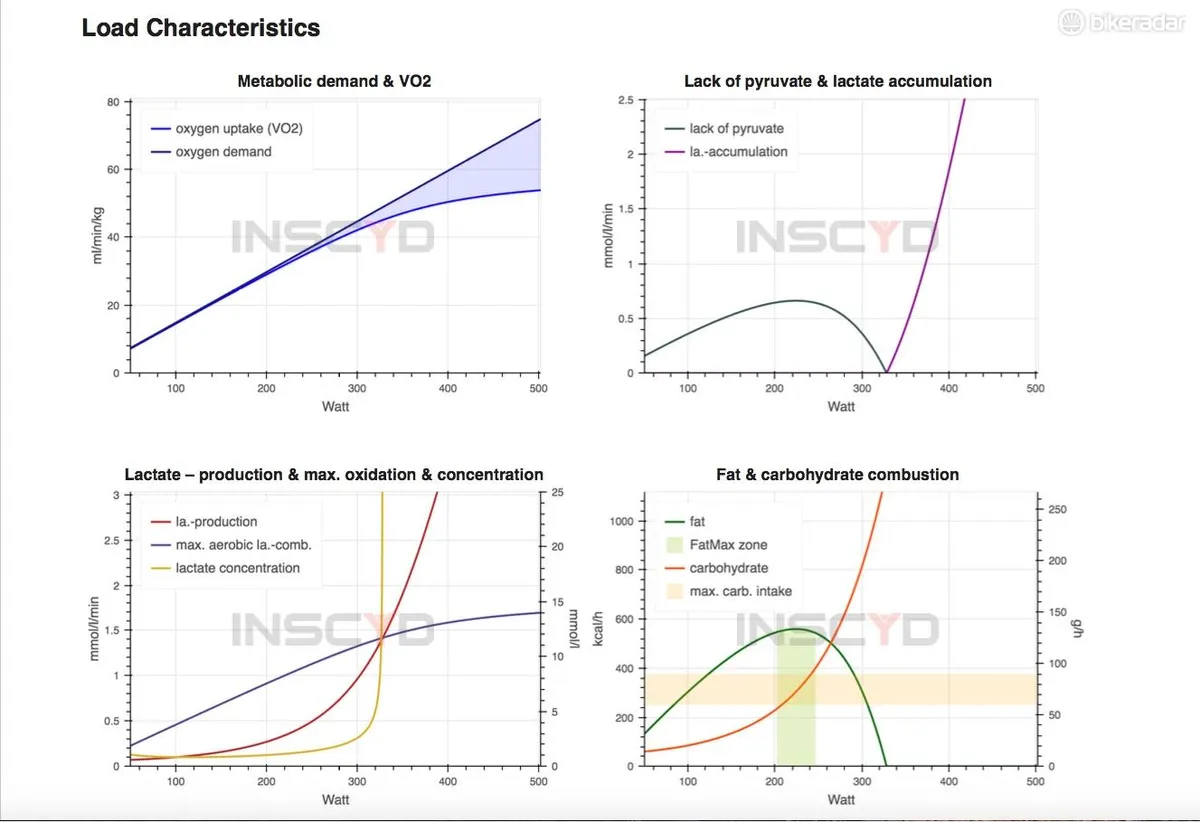
INSCYD also delivers a detailed report for eight training zones, with a wattage target and upper and lower limits for each. As a longtime TrainingPeaks user and an editor who has been writing about power training for two decades now, some of the zones looked very familiar to me: recovery, base, 'medio' (which I would call tempo), anaerobic threshold (which I would call FTP or just threshold). But some were new to me, such as FATmax, aerobic maximum, high anaerobic and lactate shuttling.
Weber was keen to point out that INSCYD defines each of these zones based on testing (and modeling), not just percentages of FTP power, the way many training applications do.
One key difference from a system based on FTP percentages is how INSCYD looks at supra-threshold efforts — where sprinters diverge substantially from time trialists or climbers. Relatedly, The Sufferfest recently launched its 4DP program that test four types of efforts — neuromuscular, anaerobic capacity, maximal aerobic power, and FTP — to gauge not only a rider's threshold power but other physiological systems above threshold.
But while the INSCYD system measures or calculates a variety of things, it does not prescribe anything in terms of training. That is left entirely up to the coach.
However, there are some actionable pieces to be gleaned, such as determining target wattages for over-under threshold intervals based on lactate accumulation and combustion rates. Or INSCYD can create a virtual athlete with projections based on tweaking various metrics, giving coach and rider targets to shoot for. In terms of lactate concentrations, the measurements and differences can look pretty small, but Weber says the results can be huge. "0.2mmol sounds so miniscule, but if you can do two more minutes until exhaustion, even at the same threshold - or you get 13w more output at threshold - that is a huge gain," Weber said.
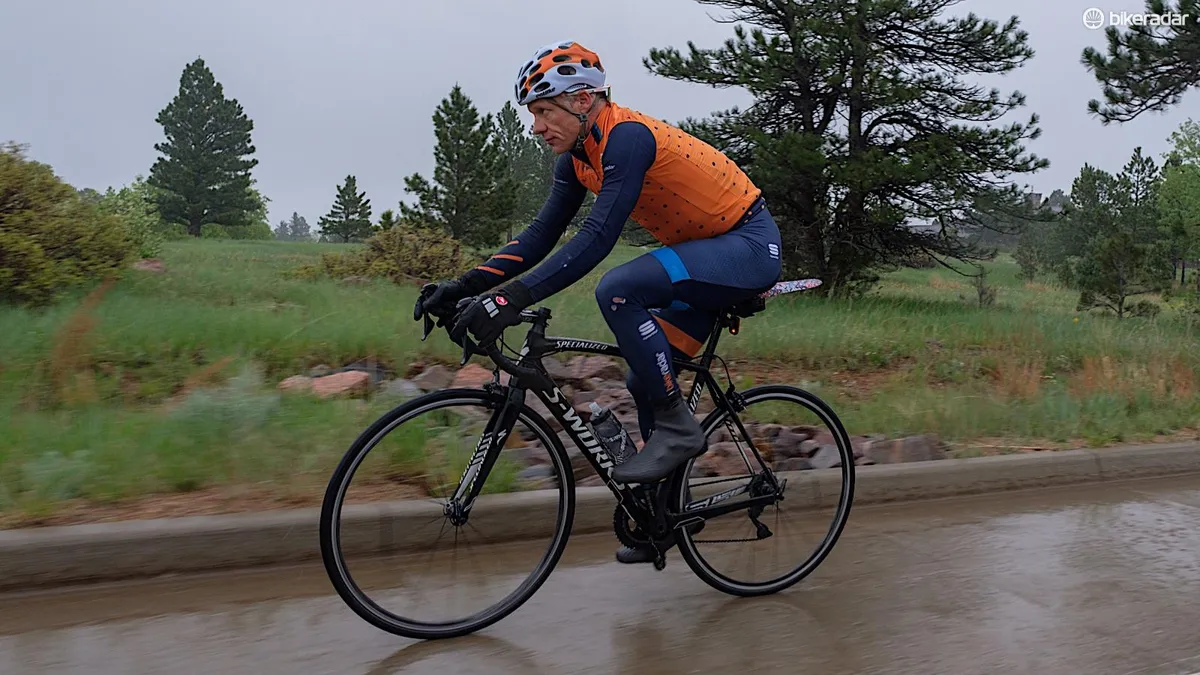
And, like with any system of measurement, a primary benefit of INSCYD is recording multiple sessions over time to track improvements or losses.
The Lotto Jumbo WorldTour team uses INSCYD. I asked the team's head of performance, Mathieu Heijboer, what he got out of INSCYD that he couldn't from another analytics package:
"The big advantage that it gives us is insight in glycolytic capacity or VLamax, which normal field or lab testing does not. Glycolytic capacity is a key factor in athlete's performance, besides VO2max and/or anaerobic threshold," Heijboer said. "We always perform a VO2max test in the winter in the lab and we find that predicted VO2max values by INSCYD are very similar to what we measured."
"By executing a four-phase test — which is very easy to do and preferred by riders over a 6x6min or 20min all-out protocol — we can analyze a rider's profile and then decide which direction training should go. Or, we have a rider who performs very well and we want to know what his profile is at that time, so that we can go in the same direction for future events."
INSCYD's calculated training zones, and comparisons to TrainingPeaks and the 20-minute FTP test
While virtually all cycling coaches agree on the concept of power-based training zones, the definitions and basis for each of the zones — or even the number of training zones — depends on who you talk to.
Threshold power is a popular term for good reason. It can be measured or approximated relatively easily. When viewed along with weight, it's a great indicator for cycling success. And ordinary riders like you and I can effectively base our training from it and use it to measure our improvement (or lack thereof).
Based on my lactate testing and INSCYD's modeling, my threshold came back at 328w. Out of curiosity, I went and looked at my TrainingPeaks account. My threshold in there? 328w.
My friend Frank Overton, founder of FasCat Coaching, had set it at that number based on a 60min normalized power from a recent ride. I had been using 330w as my threshold based on the old 'max 20min power minus 5 percent' formula.
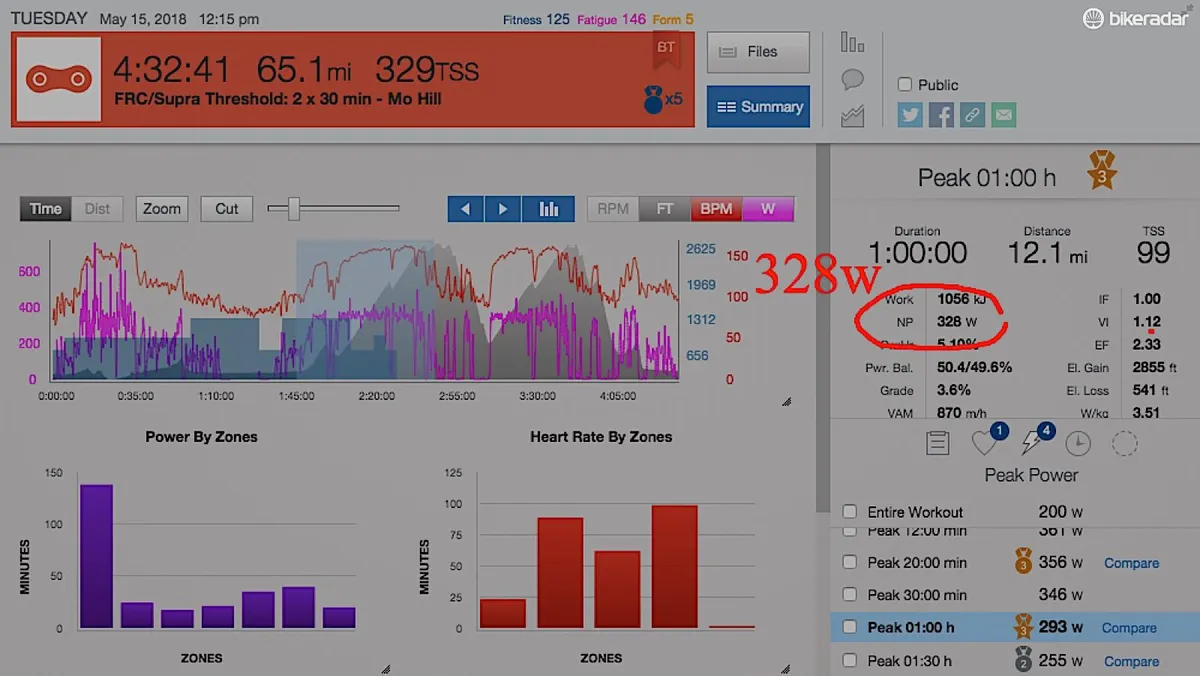
All that to say, as a rider, I believe that the INSCYD model is valid and interesting, but I am not sure how I would change my training with it. Or, more to the point, how Overton would change the training plans that I sometimes buy from him. I understand that the INSCYD supra-threshold power analysis is more sophisticated than some systems, but for me, just doing high-power intervals and tracking progress or lack thereof works.
I should note, however, that one thing I did learn was my ideal lactate combustion rate ( 220w). I have long been familiar with the concept off over/under intervals — and recovery periods between intervals — but I have understood the 'under' to be a lesser load but still a training stress, while recovery I thought of as just going as easy as possible to take a break.
While familiar with the idea of 'flushing' out efforts, I guess I never thought (or have forgotten!) about generating a certain amount of watts to combust or burn through lactate. So, I may pay more attention to pedaling in that 220w range after hard efforts in training.
INSCYD's website is www.inscyd.com if you are interested in learning more.

